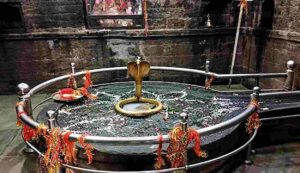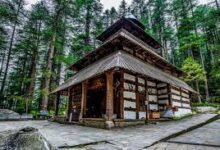Lord Bagnath Temple: In this Shiv temple of Uttarakhand, Abhishek is done with a copper pot for two months, know the recognition of the temple
Lord Bagnath Temple: In Uttarakhand, the Bageshwar area is regarded as the primary hub for religious beliefs and cultural customs. This location’s temple of Lord Bagnath is a testament to the devotees’ strong religious beliefs as well as their historical legacy. Devotees continue to visit this location year-round, but particularly during the two summer months of April and May, when a unique custom is carried out. In addition to reflecting the emotional dedication of the followers, this ritual has a connection to mythical ideas.

Summertime custom of special Jalabhishek
Let us inform you that the unique Jalabhishek on Lord Bagnath’s Shivling begins as soon as summer arrives. 15 to 20 copper or conventional pitchers are stored on two sturdy hardwood boards throughout this procedure. After being filled with water from the sacred Saryu River, the pitchers’ contents are presented on the Shivling. On the Shivling, water continues to trickle from these pitchers. This procedure lasts for two complete months; let us inform you.
This is the religious doctrine
The temple’s beliefs state that this Jalabhishek is performed to keep Lord Bagnath cool throughout the warm months. In addition to being religious, devotees see this ritual as a way to develop an emotional connection with God. Devotees’ faith is strengthened by this process, and their hopes and ambitions are realized as a result.
Winter service is also special
In addition to Jalabhishek during the summer, Lord Bagnath is also served in a unique manner throughout the winter. When the temperature drops in the winter, Shivlings are slathered with pure desi ghee to provide warmth for the Lord. Devotees believe that by performing this practice, the Lord is protected from the cold and is at peace.
Mythology and its cultural relevance
The Bagnath temple is said to be situated at the sacred site where Lord Shiva and Goddess Parvati were reunited. This explains why the customs here have persisted for thousands of years and why the location is regarded as being particularly holy. In addition to preserving religious convictions, this custom helps to bind next generations to their cultural legacy.

